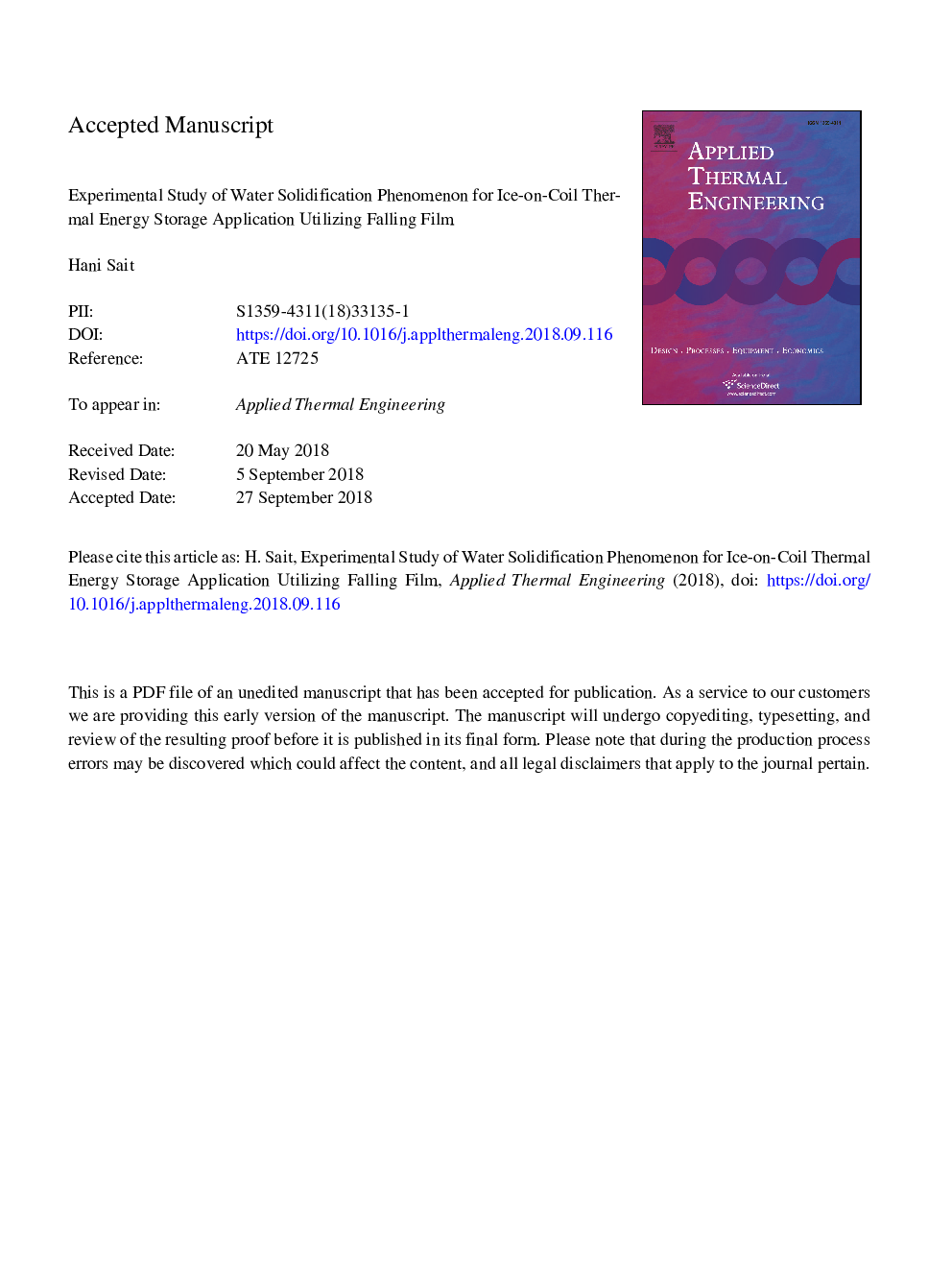| Article ID | Journal | Published Year | Pages | File Type |
|---|---|---|---|---|
| 11020808 | Applied Thermal Engineering | 2019 | 19 Pages |
Abstract
In summer season, peak load occurs due to high cooling demand during warmest hours. Thus, cold energy storage systems are used to store energy when it is abundant to reduce electrical energy consumption for cooling during peak load time. Thermal energy can be stored using either sensible or latent heat through phase change materials (PCMs). Ice-on-coil is a common method for thermal energy storage, but its heat transfer rate decreases during charging due to the low thermal conductivity of ice. The system considered here is a dynamic direct ice-making storage unit that utilizes the high heat transfer coefficient of falling film when it falls on the outside of the tube surface in the form of discrete droplets, jets, or a continuous sheet depending on the flow rate. Five parallel circular tubes subjected to different modes of the falling film were tested for formation of ice after being fed internally by cold ethylene-glycol solution. The accumulated ice was measured by recording the changes in weight of the tubing system during the duration of each experiment using an electronic scale. About 1.73â¯g/m2â¯s of ice was formed on the tubing with a starting heat transfer coefficient of 170â¯W/m2â¯K when the falling film was in the jet mode. The information gained here is presented as design factors that can be used to improve the performance of ice-dependent thermal energy storage systems using PCM.
Keywords
Related Topics
Physical Sciences and Engineering
Chemical Engineering
Fluid Flow and Transfer Processes
Authors
Hani H. Sait,
